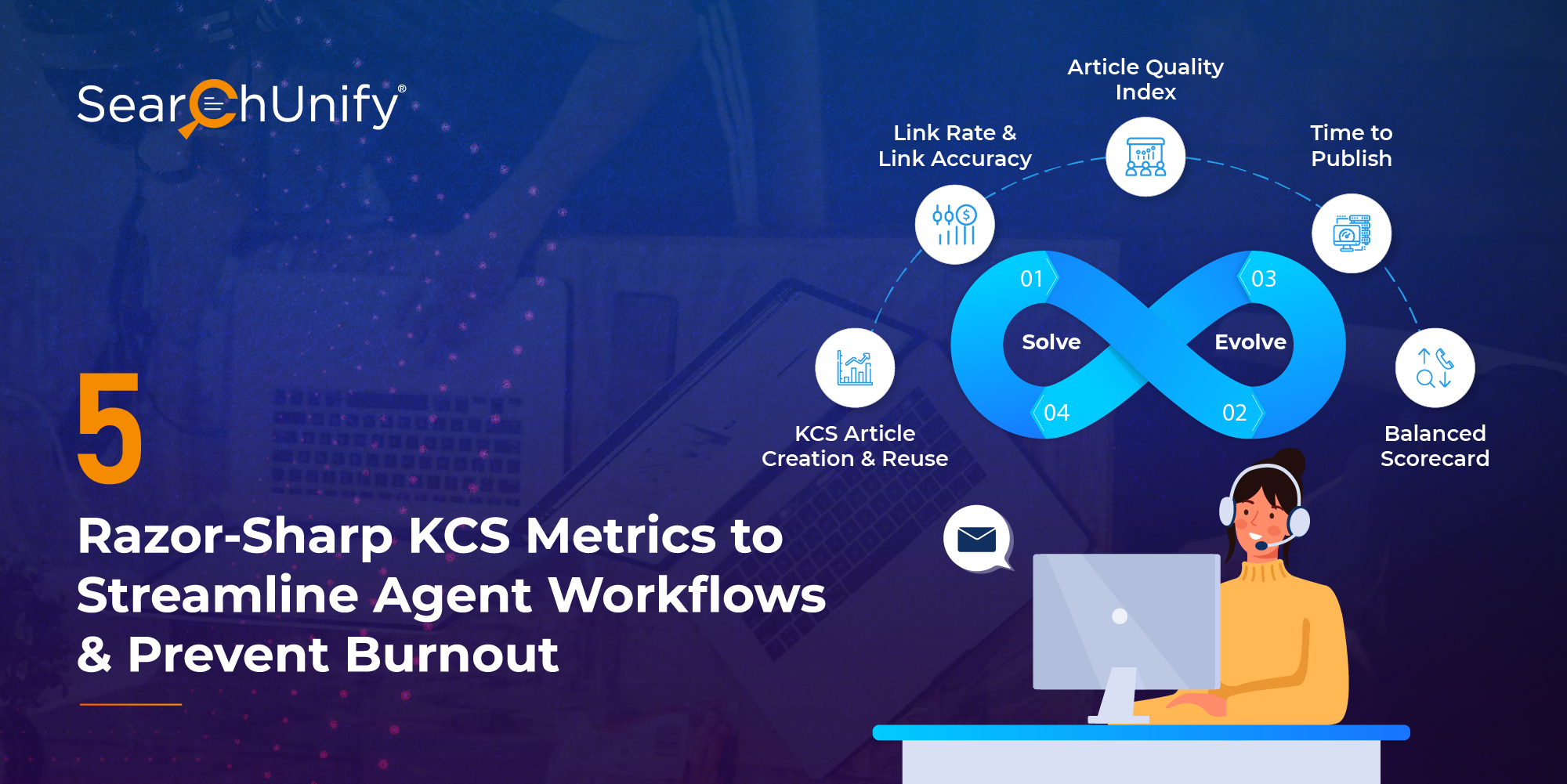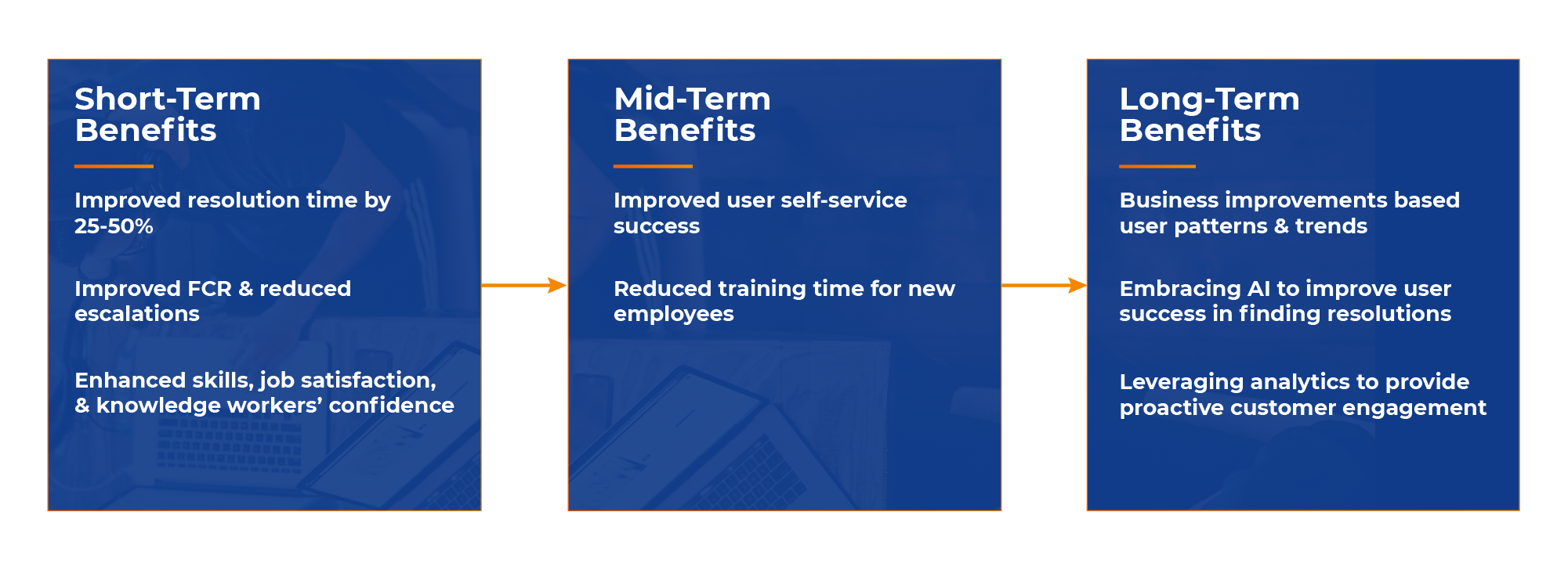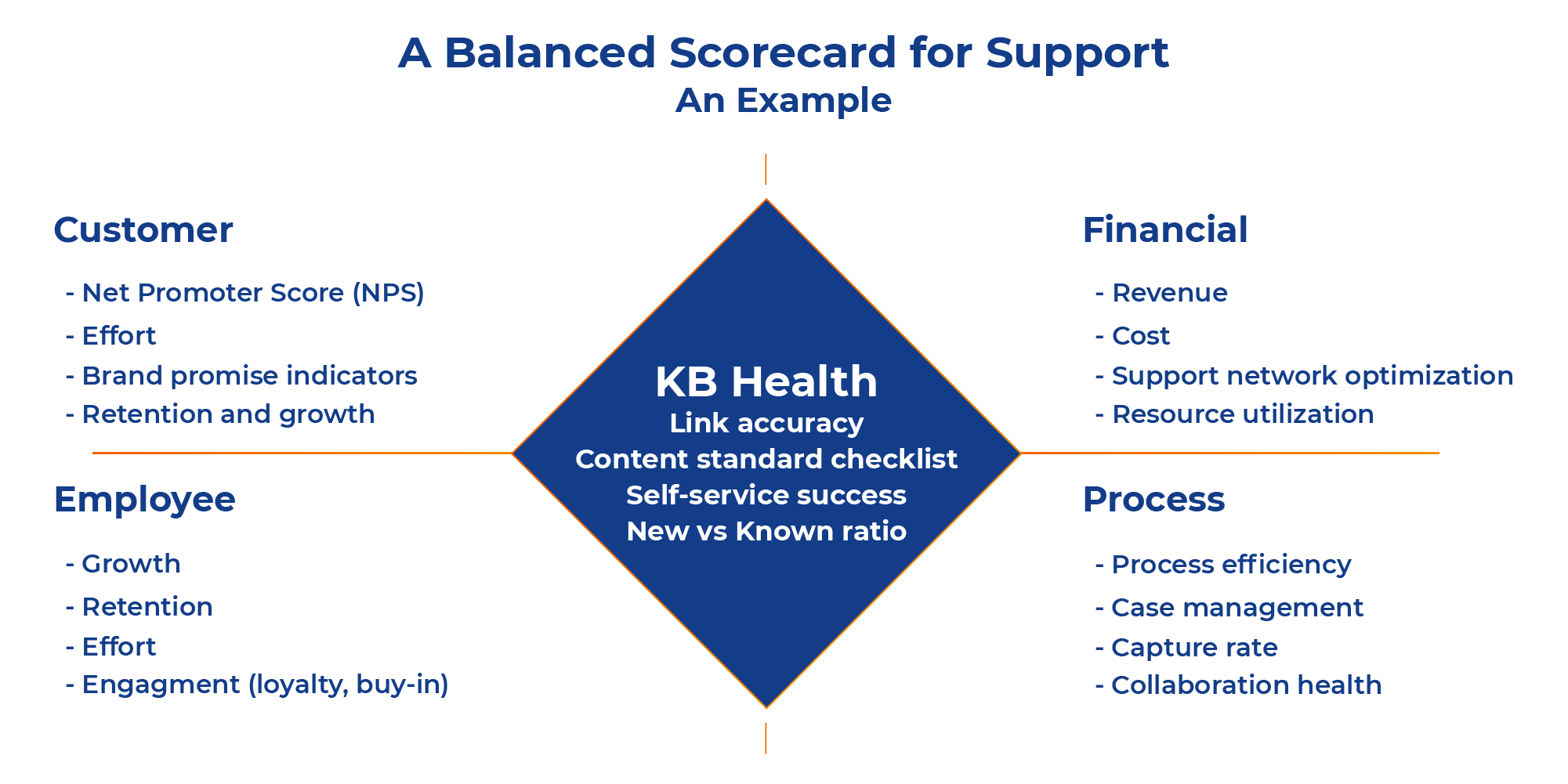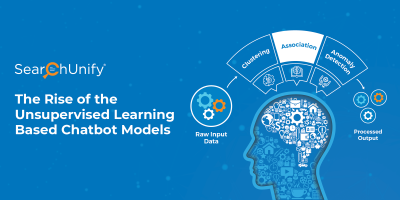
Knowledge-Centered Service (KCS) is a proven, principle-based methodology that captures, structures, reuses, and improves enterprise knowledge to streamline support processes. It emphasizes on continuously generating demand-driven and self-improving knowledge, thus maximizing support outcomes. This blog post focuses on the key KCS metrics that you need to track to improve agent workflows and operational efficiency. Let’s get rolling.
Role of KCS in Streamlining Agent Workflows
KCS helps you to tap into the collective knowledge of your organization. But, you cannot reap the benefits overnight; time and patience are the keys. Here’s how it contributes in empowering your support mavens in the short run and long run.

Let’s say a service agent named Jim has recently joined your organization. He is assigned a support ticket X and works his way through resolving it. But with KCS in place, he can identify which KB articles helped resolve similar issues in the past and leverage the same to provide a relevant first response, thus significantly bringing down the resolution time.
Additionally, customers add details like the product version, issue type, description, severity, etc., while creating a ticket. By tapping into this information along with the historical user data, Jim isn’t just empowered to resolve the issue but also to enhance CX.
5 Key KCS Metrics to Track & Ensure KM Success
The following metrics help you assess the performance of your KM program. You can also gain actionable insights from these metrics to ameliorate your support processes. Let’s see how.
1. Article Quality Index
As the name suggests, it is the content health indicator of KBs. Originally, the idea was that organizations must have consistent quality metrics for quantifying the article quality and contributors’ performance. But now, more prevalent as Content Standard Checklist, it helps you gauge how effectively you align your articles with the content standard and how well your knowledge workers understand and comply with those standards. Without this metric and corresponding coaching, you are likely to flood your KBs with redundant and duplicate content.
2. Time to Publish
The moment you learn about an issue, it is crucial to create and publish content so that knowledge workers can quickly handle similar problems without reinventing the wheel. This metric helps you answer if your teams are creating content in a timely fashion or not. If the answer is affirmative, rest assured that customer success with self-service will improve.
Fun Fact: As per KCS v6 Adoption Guide, 90% of what is known internally and usable by the customer should be published to self-service at the time we know it (at or before case closure).
3. KCS Article Creation & Reuse
KCS article creation will naturally lead to KCS article reuse. The value of any particular article is directly proportional to the number of times it is reused to resolve issues. With this metric, you can gauge how well you are learning from your past interactions.
Record the reuse of an existing article by linking; modify the existing article if you gain additional information about a known issue; create a new article if no information reflecting the request and resolution exists. By and large, reuse, modify, and create altogether represent the primary ways of contributing to KCS.
Fun Fact: As an organization matures, it’s apparent that it would have captured a high percentage of known issues. Hence, the creation rate is likely to plummet and the reuse rate will continue to rise.
4. Link Rate & Link Accuracy
Link rate is the percentage of cases closed with the help of linked articles. Since it’s an activity, predefining a goal is irrational. On the flip side, link accuracy is an outcome. It defines the percentage of linked articles that are actionable and relevant to the case. Hence, it should have a goal.
Fun Fact: As per Consortium for Service Innovation, link rates exceeding 60% and link accuracy exceeding 90% help you provide credible and actionable input to product management and development about the highest impact issues.
5. Balance Scorecards
It’s a strategic management performance metric that provides a comprehensive view of your KCS ecosystem’s health. The prime four constituents of KCS are employee, customer, financial, and process. The image below explains how you can keep an eye on each of these with a balanced scorecard.

For example, you can assess employee engagement, retention, growth, etc., and leverage the learnings to make strategic changes. If the retention rate for your organization is low, then there’s a probability of your employees being overworked, struggling with monotony, lacking growth opportunities, etc. Once you have figures in hand, you need to identify the root cause hindering your organizational growth and come up with solutions accordingly.
Want to Know More About Optimizing Support Processes with Search Insights?
If you want to hear a real success story of how an organization gleaned insights from search analytics to maximize relevance and steer support processes in the right direction, then tune in to our fireside chat Leveraging SearchUnify Analytics & Insights: The Cornerstone Story. Hear from Cheryl Zupke, Technical Content Developer at CSOD, how she leveraged SearchUnify analytics and tuning to amp up cumulative case deflection from 39% to 50% within three months of implementation.















